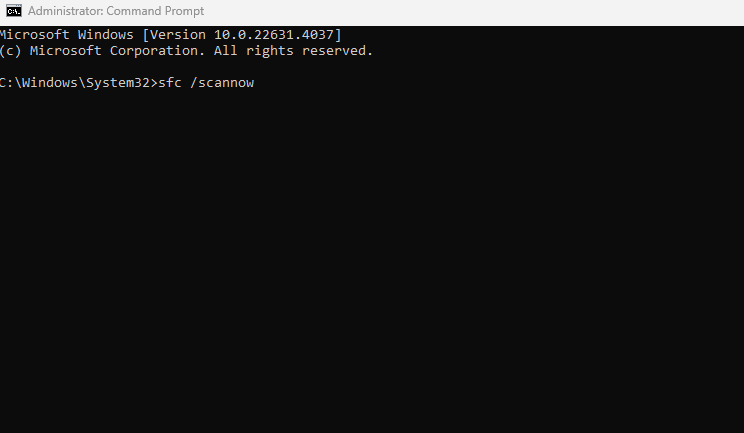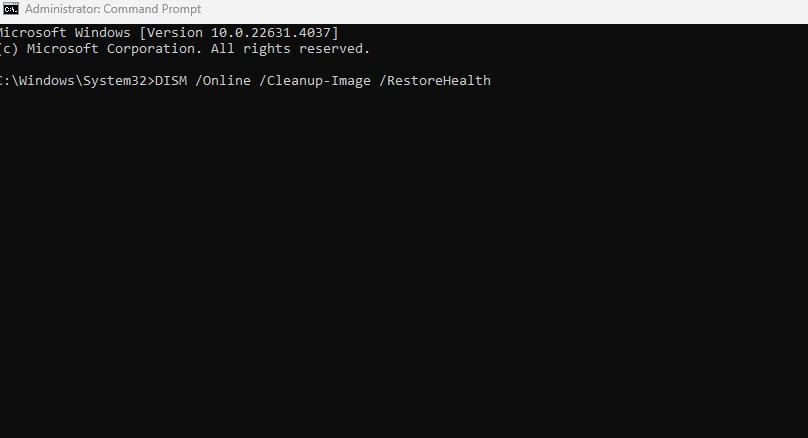Corrupted files on Windows 10/11 can be a significant inconvenience, often leading to data loss, system instability, or software malfunctions. Fortunately, several methods exist to fix these corrupted files and restore your system to full functionality.
Tweaking will walk you through each step, ensuring you know how to tackle file corruption effectively.
Understanding File Corruption on Windows 10/11
Before proceeding with the troubleshooting steps, it’s essential to understand file corruption and why it occurs. File corruption occurs when data within a file is altered or damaged, making it unreadable or unusable. This can happen for various reasons, including hardware failures, sudden power outages, malware attacks, or software crashes.
5 Ways to Solve Corrupted Files on Windows 10/11
1. Identify the Corrupted Files
Identifying corrupted files is the first step in resolving the issue. Corrupted files can manifest in various ways, such as error messages when opening a file, applications crashing unexpectedly, or files displaying garbled text or images.
Check for Error Messages: When trying to open a file, you may receive an error message indicating the file is corrupted. Note the error code or message for further troubleshooting.
Use the Command Prompt: Open the Command Prompt and use the chkdsk command to scan your hard drive for corrupted files. This tool will identify and attempt to fix file system errors.
Run Windows Defender: Malware can corrupt files, so running a full system scan with Windows Defender can help identify any malicious software causing the problem.
2. Using the System File Checker (SFC) Tool
The System File Checker (SFC) is a built-in Windows tool that scans and repairs corrupted system files. This tool is handy for fixing issues that prevent Windows from functioning correctly.

Open Command Prompt as Administrator: Press Win + X and select “Command Prompt (Admin).”
Run the SFC Scan: Type sfc /scannow and press Enter. The SFC tool will scan your system for corrupted files and automatically replace them with the correct versions.
Review the Results: Once the scan is complete, you’ll see a message indicating whether any issues were found and fixed. If the tool reports that some files couldn’t be repaired, proceed to the next step.
3. Repairing with the Deployment Imaging Service and Management Tool (DISM)
The Deployment Imaging Service and Management Tool (DISM) is another powerful tool for fixing corrupted system files, mainly when SFC cannot repair all the issues. DISM can restore the health of your Windows image, allowing SFC to perform more effectively.
Open Command Prompt as Administrator: Press Win + X and select “Command Prompt (Admin).”

Run DISM Command: Type DISM /Online /Cleanup-Image /RestoreHealth and press Enter. This command will check and attempt to repair your Windows image for corruption.
Restart Your Computer: After completing the process, restart and rerun the SFC scan to ensure all corrupted files are repaired.
4. Restoring Files with Previous Versions
Windows 10/11 offers a feature that allows you to restore previous versions of files, which can be helpful if the current version of a file is corrupted. This method works best if you have enabled File History or System Restore on your computer.
Right-click the Corrupted File: Navigate to the location of the corrupted file, right-click on it, and select “Properties.”
Access the Previous Versions Tab: Go to the “Previous Versions” tab in the Properties window.
Select and Restore a Version: Choose a version of the file from the list that predates the corruption and click “Restore.” This will replace the corrupted file with a working version.
I recommend using a third-party PC solution like Tweaking for advanced backup management. Tweaking allows you to create system restore points and back up the Registry before implementing any changes, enabling you to revert to a previous state quickly.

Tweaking also functions as an antivirus program, helping to maintain the smooth operation of Windows Defender and Firewall while repairing any damage caused by past malware infections.
Download and install Tweaking today.
5. Using Third-Party File Recovery Tools
When built-in Windows tools cannot fix corrupted files, third-party file recovery tools can provide an alternative solution. These tools are designed to reconstruct data and recover or repair corrupted files.
Preventing File Corruption in the Future
While knowing how to fix corrupted files is crucial, prevention is equally important. Taking proactive steps to protect your data can minimize the risk of future file corruption.
1. Regularly Back Up Your Data
Creating regular backups is one of the most effective ways to protect your data. If a file becomes corrupted, you can quickly restore it from a backup, minimizing the impact of the corruption.
Use Built-In Tools: Windows offers tools like File History and System Restore to automatically back up your files and system settings.

Consider Cloud Storage: Services like OneDrive, Google Drive, or Dropbox can provide automatic backups and version histories, making it easier to recover files if they are corrupted.
Create System Images: Consider creating a system image for a more comprehensive backup. This will allow you to restore your entire system to a previous state, including all files and settings.
2. Protect Against Malware
Malware is a common cause of file corruption. Implementing robust security measures can significantly reduce the likelihood of compromised files.
Use Antivirus Software: Ensure you have reliable antivirus software installed and keep it updated.
Enable Windows Defender: Use Windows Defender, which offers real-time protection against malware.
Avoid Suspicious Links and Downloads: To prevent malware infections, be cautious when clicking on links or downloading files from untrusted sources.
Conclusion
File corruption on Windows 10/11 can be frustrating, but with the right tools and methods, it’s possible to fix corrupted files and prevent future occurrences. Whether using built-in tools like SFC and DISM or relying on third-party software, this guide provides comprehensive steps to help you restore your system to full functionality.
Regular backups and robust security practices safeguard your data against future corruption.
Menzi Sumile
Verified at:
29/05/2024 06:37
Leave a Reply